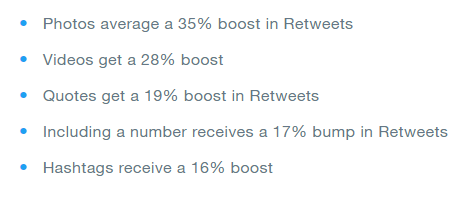Tweeting for Business – Top Tips for Twitter

This post is also available in:
![]()
![]()
![]()
While examining our social media strategy, we decided to look at our Twitter game. SimplyBook.me is not getting the engagement we would like, so we decided to do some research. We didn’t stick to a single source; we looked around for people with excellent Tweeting action. Like us, you are also tweeting for business purposes, so maybe you will find some top Twitter tips you aren’t using and improve your Twitter skills.
Why is Tweeting for Business Different from Other Social Posting?
Social media is now essential for every business. However, while it’s crucial to have a social media strategy, people often forget that they need different strategies for each platform. Hence this article.
Twitter is very much ‘Here and Now’. Of all the social platforms, Tweets have by far the shortest lifespan of 18 minutes. That’s not a long time to grab attention, start a conversation, and engage your audience. However, that short post lifespan supports far more tweets daily than Facebook, Instagram, and LinkedIn, which all show distinct disengagement if your business posts more than once a day. LinkedIn is restricted to weekdays only – although I know of several businesses that post on weekends, I haven’t removed them from my feed yet.
With the brevity of the Tweet lifespan, it makes absolute sense that it has a shorter content capacity. While purists liked the 14 character limit, 280 is not a massive amount of space to make your point, which leads to punchier and more attention-grabbing phrases. It also means using images, gifs, and video is essential to attracting and holding attention and enhancing your message.
Unlike the other major social platforms, and I’m not including Youtube or Pinterest because they aren’t really “social”, Twitter attracts more engagements with more Tweets.
Tweeting for business requires more than just a superficial post once a day. Twitter engagement demands attention from the company (and the person managing the account) before attracting genuine engagement from followers.
Twitter is not a relationship-building platform because it is so transient. Instead, it is about following people, conversations and topics that matter to the individual. Moreover, it’s about what is happening NOW!
Why Tweet?
It’s a good question. Why should you tweet when it seems to mean more work for your social media manager to post multiple times a day? Twitter is an ideal platform for engagement, according to Gina Mueller on Convince & Convert. She’s not wrong when she describes Twitter:
“Twitter is the bar scene, where people let loose and talk to strangers, drop one-liners (or pick-up lines), and engage with personalities from all walks of life.”
Unless you keep your profile and tweets private, which is a bad idea for businesses, you have the opportunity to talk to and engage with anyone. It doesn’t matter if you @mention a celebrity or a friend from school; they can see what you’ve tweeted, and so can everyone else. Whether they respond, is an entirely different matter, but everyone can talk to everyone else. Agree, disagree, start a heated debate, find a kindred spirit or even make people laugh. Twitter is so fleeting and open to such a broad range of demographics. You can easily reach everyone you want to for your business needs.
Some interesting Twitter facts that could influence you to tweet more:
- 328 million active monthly users
- 12% of US residents use it as a news source (behind Facebook @ 43% and Youtube @ 21%)
- 80% of Twitter usage is mobile
- Twitter skews male by a ratio of 7:3
- The primary users of Twitter range pretty equally between the ages of 25 and 49 (25-34 @ 21.4% and 35-49 @ 20.7%)
10 Top Tips on Twitter for Business
I’ll start with a few “no-brainer” tips that, if you didn’t already know them, should be common sense and apply across all social platforms, not just Twitter.
The obvious ones
- Choose a brand defined and defining username – No one can find your business to follow it if you have your business under an obscure username.
- Craft a compelling and concise profile – You don’t get a lot of space to define and describe your company profile, be direct and precise.
- Use a clear and correctly sized logo or personal picture as your avatar. This also applies to your banner image. Nothing screams unprofessional like a poorly fitting image as your identifier.
- Don’t keep your profile private – No one is following you if you have something to hide.
- Avoid constant sales pitches – If you’re tweeting up to 30 times a day and it’s all sales, it’s almost guaranteed to make people unfollow you.
The most common tips
The following tips almost all appear on the lists of things to do when Tweeting for business.
Engage with your audience
It sounds obvious, but many businesses are guilty of posting into the internet ether and failing to respond when someone wants to talk. Engagement in conversation prolongs the lifespan of a tweet, making it more visible and reaching more people.
Did you see this one?
So many people and brands engaged with this one, and we missed it. It even became a challenge #WeetaBeanzChallenge
Engaging with your audience, whether it is responses to questions, joining a debate, or contributing to a conversation with others in your industry, you show that you are approachable. When clients can see that you are willing to engage with them, they are more likely to trust you and want to work with you.
There are three things that you need to do when people start interacting with your brand on Twitter:
- Answer Questions
- Ask more
- Keep the discussion going
No you can’t keep a thread going forever, that’s simply wrong. However, you can keep people talking about and moving your company awareness forward. The Weetabix thread above was still going a month later, in sub-threads and other conversations.
Be Visually Stimulating
While you shouldn’t be afraid to throw in the occasional text-only tweet, tweets with visually stimulating content get a massive boost.

@Yorkshire Tea is a very good example of a Twitter account that mixes both text and imagery very well and still manages a decent engagement rate with their following. They also run a very good line in mixing promotional content, social conscience, current affairs, education and humour. I want to be like Yorkshire Tea.
Tweeting for business doesn’t have to be all business. Clients do like to know that there’s a human behind the company logo.
Follow your clients & follow your competition.
You might feel that following others in your industry is like boosting the competition. However, you get to keep on top of what your competition is doing. You also get to engage in conversation about topics that involve everyone in your industry, and if they catch a current issue first, you can boost your exposure by joining in.
Everyone who knows anything about Twitter insists that you shouldn’t judge your Twitter success by followers but by the engagement you get from those following you. Of course, it’s always nice to get more followers from the increased exposure.
What about Conflicting Advice?
I’ll also include some interesting information about some of the conflicting advice.
Automating Tweets (or not?)
While it might seem prudent to automate tweets to offset some of the additional work that comes with posting more frequently to Twitter, many advise against it.
The advice to avoid automation is that Twitter is such a ‘Now’ platform that you can’t jump onto current affairs and trending topics with automated tweets. The only way you can do that is to have a Twitter posting schedule that references all the upcoming events somehow, which is a little premature. That approach also precludes the ability to join conversations and threads.
While automating blog posts and curated content from other sources, you can easily use automation, but to really engage with both peers and potential clients, you do need to have one eye on the feed.
Use Hashtags (but not too many)
Use hashtags to boost your tweet’s visibility, but don’t use more than one or two. If you also use Instagram for your business, that will feel wrong.
Hashtags do boost visibility and also help your message get to the people who need it. However, if your tweet needs to get in front of a multitude of different groups or if there is a large number of associated hashtags (look at the number of separate tags for online scheduling), you might want to rethink whether the 1-2 hashtags per post is a definitive rule.
From my perspective, I would need to post multiple times to get the same tweet to both sides of the divide between those who say ‘booking’ and those that say ‘scheduling’.
However, I believe there is room for manoeuvre. More than two hashtags in a section of text make it difficult to read, so I agree with the “no more than 2” rule. However, if you have the character space, include extra hashtags at the end of your tweet to increase your reach without making your post look like a sea of random blue words.
Some Prompts for Tweetable Topics for Business
If you’re feeling overwhelmed at the idea of having to think of up to 15 things to tweet about per day, scale it back and think of 3-5 things to tweet about. When you don’t limit yourself to tweeting ONLY about “the benefits of your business”, it’s easier to think of potential ideas without the risk of repeating yourself.
- Details of new publications where your company features
- News items that mention your company
- Links to the blog posts you’ve recently published
- Thoughts and commentary on conferences or meetings you’ve attended
- Activities that your company is engaged in
- Questions to invite feedback – serious or humorous
- Interesting news items you’ve found
- Interesting photographs
- Replies to other people’s tweets
- Retweets of other people’s tweets
Tweeting for Business is a Different Beast
You should already know about the importance of a social strategy, but it’s easy to forget that not all social platforms work the same. It’s even harder to remember when you use automation to make life easier. I, and many like me, are guilty of forgetting to pay attention to the responses, or lack of them, that we get from the social internet.
When other things feel like they take priority, it’s common for us to use similar strategies for all our social media interactions. We can change our word, and character counts to suit the platform. To hashtag or not to hashtag (Facebook vs Instagram) and image resolutions to fit the post correctly are also easy adjustments to the overall strategy.
However, when the strategy needs to differ so much from the “average”, we need to either take an active role or be content with poor engagement. Tweeting for business requires its own strategy and more attention to the ever-shifting sands that are the Twittersphere.
Embrace the fleeting nature and the immediacy of Twitter as an ideal place to test your company voice, what works and what doesn’t, and how to keep yourself current and relevant. Trial and error on Twitter are far less damaging than the other platforms by the very nature of its short lifespan.
I’ll be putting some of these tips to good use. If you discover any more, we’d love to hear about them and how any of these help your Twitter game. Let us know in the comments.



Comments
0 commentsNo comments yet